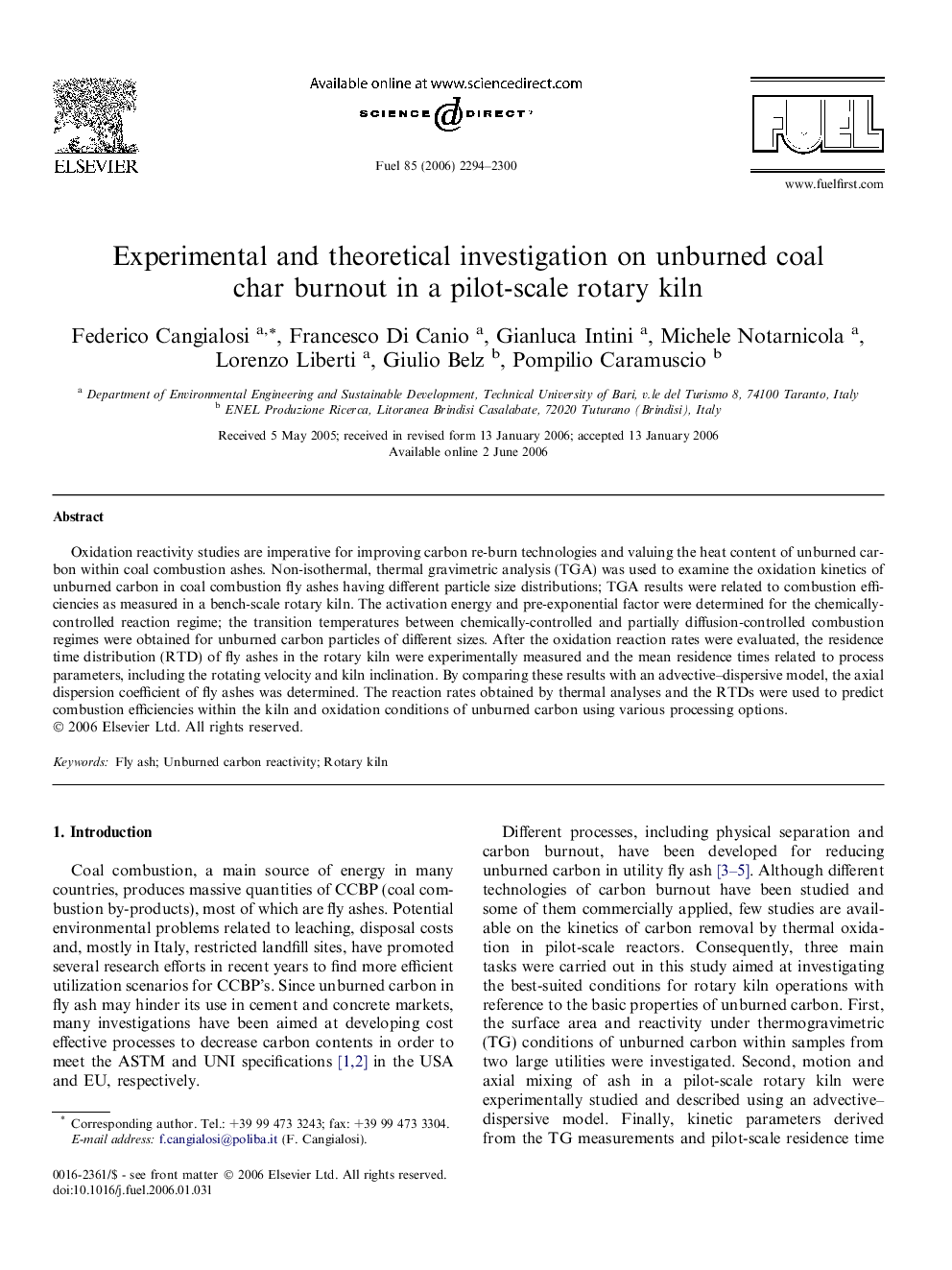| Article ID | Journal | Published Year | Pages | File Type |
|---|---|---|---|---|
| 208456 | Fuel | 2006 | 7 Pages |
Oxidation reactivity studies are imperative for improving carbon re-burn technologies and valuing the heat content of unburned carbon within coal combustion ashes. Non-isothermal, thermal gravimetric analysis (TGA) was used to examine the oxidation kinetics of unburned carbon in coal combustion fly ashes having different particle size distributions; TGA results were related to combustion efficiencies as measured in a bench-scale rotary kiln. The activation energy and pre-exponential factor were determined for the chemically-controlled reaction regime; the transition temperatures between chemically-controlled and partially diffusion-controlled combustion regimes were obtained for unburned carbon particles of different sizes. After the oxidation reaction rates were evaluated, the residence time distribution (RTD) of fly ashes in the rotary kiln were experimentally measured and the mean residence times related to process parameters, including the rotating velocity and kiln inclination. By comparing these results with an advective–dispersive model, the axial dispersion coefficient of fly ashes was determined. The reaction rates obtained by thermal analyses and the RTDs were used to predict combustion efficiencies within the kiln and oxidation conditions of unburned carbon using various processing options.
